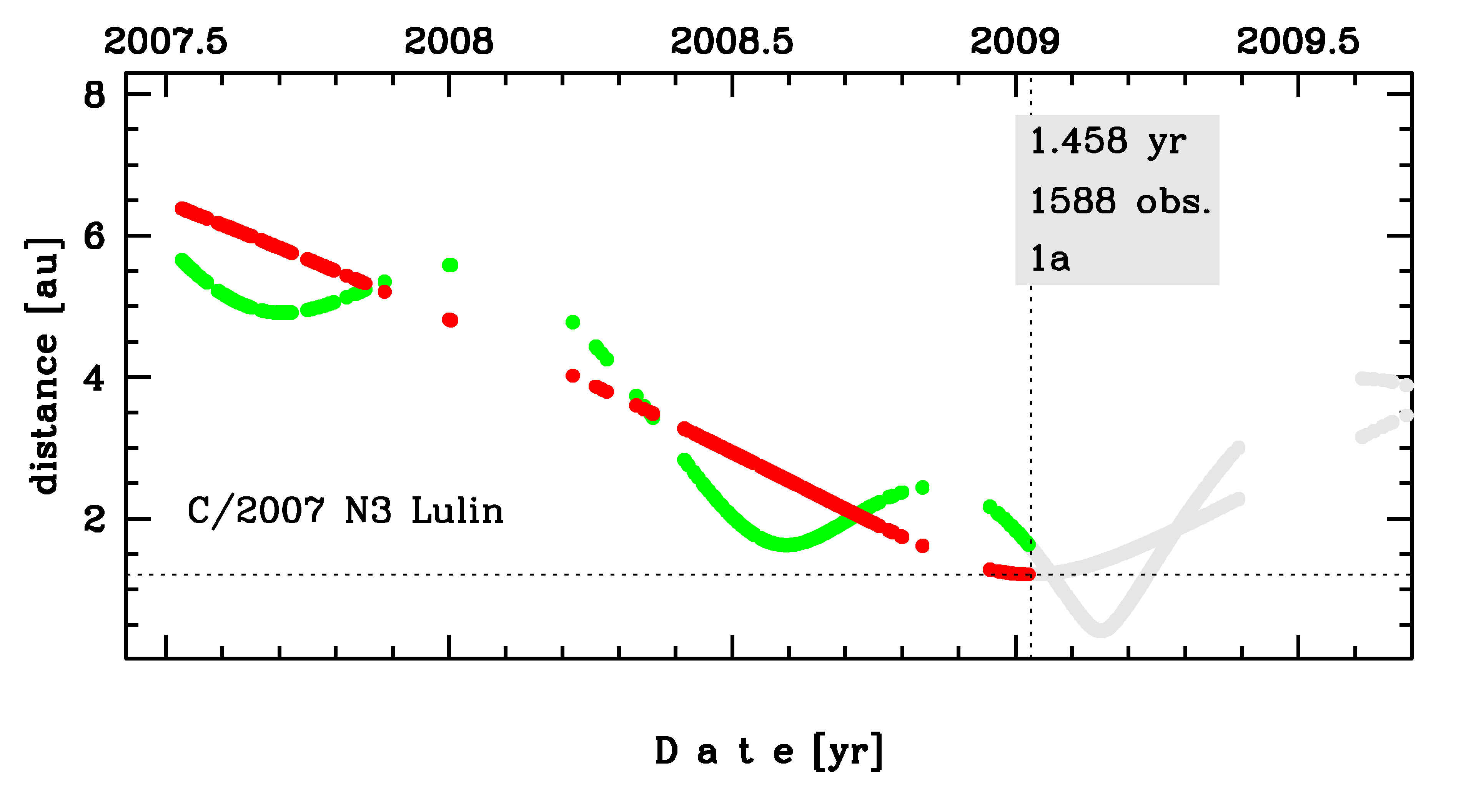C/2007 N3 Lulin
more info
Comet C/2007 N3 was discovered on 11 July 2007 with Lulin Sky Survey (Taiwan); that is about 1.5 years before its perihelion passage. It was observed until 1 January 2011 (see picture).
Comet had its closest approach to the Earth on 24 February 2009 (0.411 au), about 1.5 month after its perihelion passage.
Preferred solution given here is based on data spanning over 3.48 yr in a range of heliocentric distances: 6.38 au – 1.212 au (perihelion) – 7.82 au.
This Oort spike comet suffers rather large planetary perturbations during its passage through the planetary system and these perturbations lead to more tight future orbit with semimajor axis of about 1,200 au (see future barycentric orbits).
For more details see Królikowska and Dybczyński 2013 and Królikowska 2020.
Comet had its closest approach to the Earth on 24 February 2009 (0.411 au), about 1.5 month after its perihelion passage.
Preferred solution given here is based on data spanning over 3.48 yr in a range of heliocentric distances: 6.38 au – 1.212 au (perihelion) – 7.82 au.
This Oort spike comet suffers rather large planetary perturbations during its passage through the planetary system and these perturbations lead to more tight future orbit with semimajor axis of about 1,200 au (see future barycentric orbits).
For more details see Królikowska and Dybczyński 2013 and Królikowska 2020.
| solution description | ||
|---|---|---|
| number of observations | 1588 | |
| data interval | 2007 07 11 – 2009 01 08 | |
| data arc selection | data generally limited to pre-perihelion (PRE) | |
| range of heliocentric distances | 6.38 au – 1.21au | |
| type of model of motion | NS - non-gravitational orbits for standard g(r) | |
| data weighting | YES | |
| number of residuals | 3132 | |
| RMS [arcseconds] | 0.32 | |
| orbit quality class | 1a | |
| orbital elements (barycentric ecliptic J2000) | ||
|---|---|---|
| Epoch | 1710 02 26 | |
| perihelion date | 2009 01 09.70776425 | ± 0.00006094 |
| perihelion distance [au] | 1.20595081 | ± 0.00000099 |
| eccentricity | 0.99996175 | ± 0.00000086 |
| argument of perihelion [°] | 136.944066 | ± 0.000160 |
| ascending node [°] | 338.502566 | ± 0.000149 |
| inclination [°] | 178.368251 | ± 0.000005 |
| reciprocal semi-major axis [10-6 au-1] | 31.72 | ± 0.71 |
| file containing 5001 VCs swarm |
|---|
| 2007n3p5.bmi |

